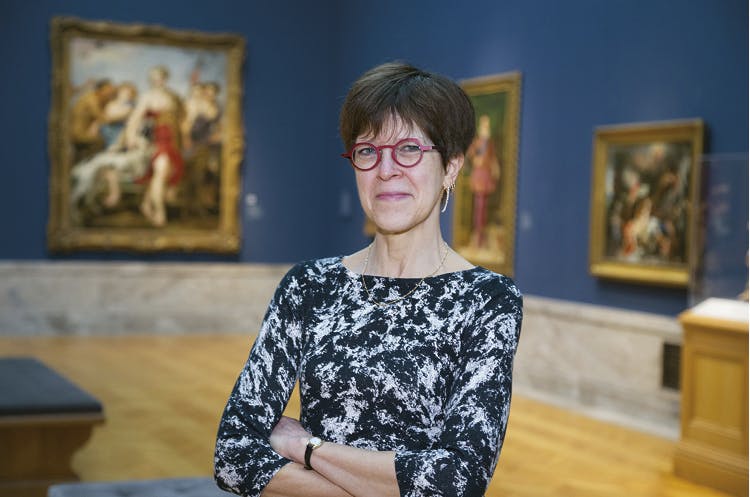- Magazine Article
- Staff
Welcome Betsy Wieseman
The museum’s curator of European paintings and sculpture thinks globally and acts locally

Gregory M. Donley Magazine Staff
Marjorie E. “Betsy” Wieseman joined the museum in April as the Paul J. and Edith Ingalls Vignos Jr. Curator of European Paintings and Sculpture, 1500–1800, after 10 years at the National Gallery in London. Earlier, Wieseman held curatorial positions at the Cincinnati Art Museum and the Allen Memorial Art Museum, Oberlin College. An expert in 17th-century Dutch and Flemish painting, she has been active in developing exhibitions and publishing scholarship. Wieseman earned her PhD from Columbia University, and BA and MA degrees from the University of Delaware. See her curatorial profile on clevelandart.org for details about her exhibitions and publications.
In her role here, she sees interesting opportunities for collaboration with other museums in the region and around the world. “The Cleveland Museum of Art is really in between all of the museums where I’ve worked in terms of the size and scope of its collection and its global reach,” she says. “I’m interested in making the international community more aware of us. I’ve had a lot of colleagues say, ‘Wow, Cleveland, they have that in the collection? I never knew that.’ At the same time I want to collaborate with smaller, local institutions. There are many ways we can create a network that operates regionally but also internationally, because one of the museum’s strengths is that it can straddle those worlds quite well. One thing I was immediately struck by is the prominent role the museum plays in the Cleveland community. It has such a long history of generous donors and advocates, and it’s exciting to have that base of support to build on.”
She approaches curatorship with enthusiastic devotion. “Conducting new research and reaching audiences are not mutually exclusive—they go hand in hand. I feel very strongly about those words on the front of the building: ‘For the benefit of all the people forever.’ It’s my job as a curator to help people take ownership. It starts out at a simple level of getting people comfortable with walking through the door, then engaging them with the art using their senses. It doesn’t matter to me whether they are a new visitor or a scholar with specialized knowledge—this museum is for everyone. If I sound a little bit evangelical about it, I am.”